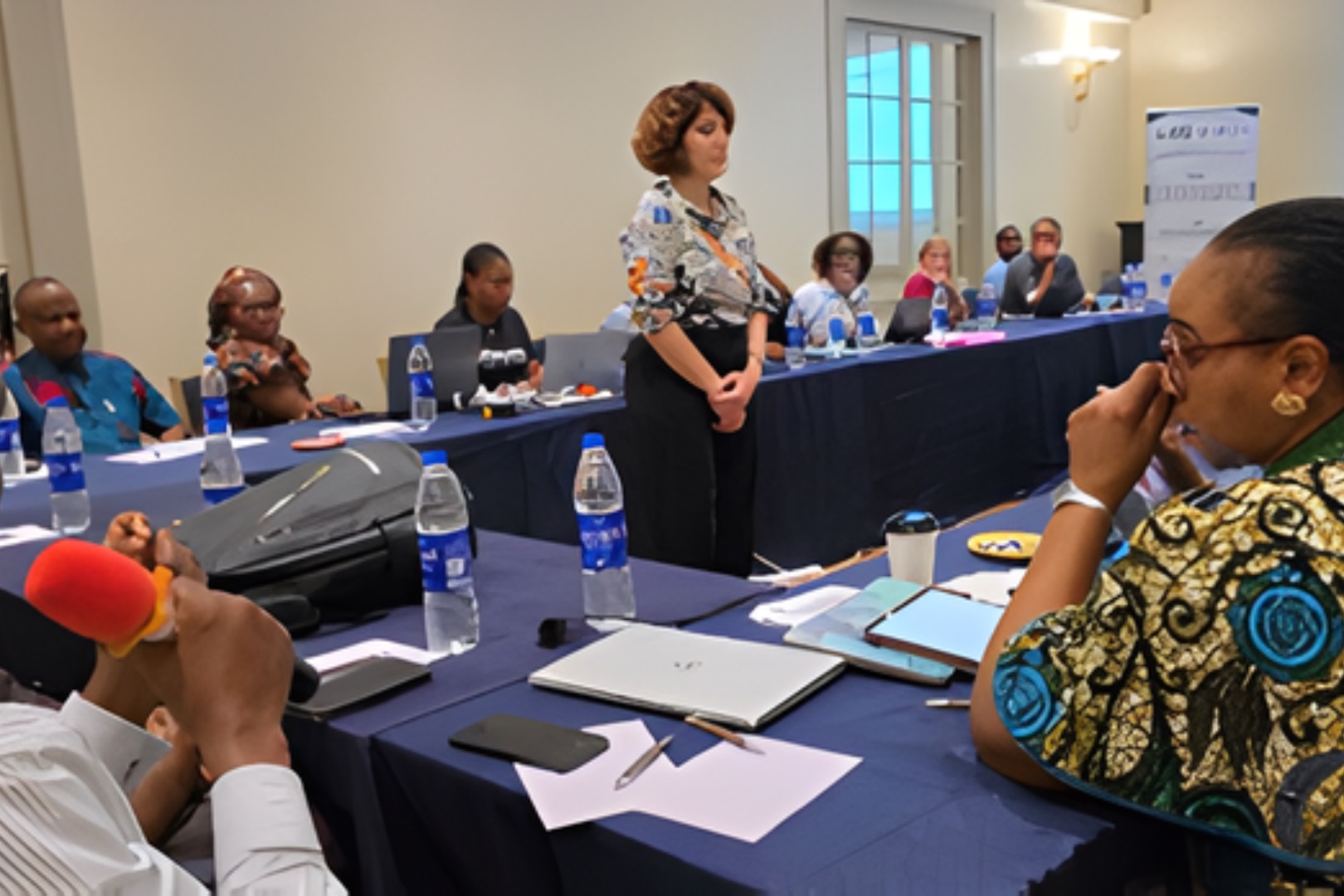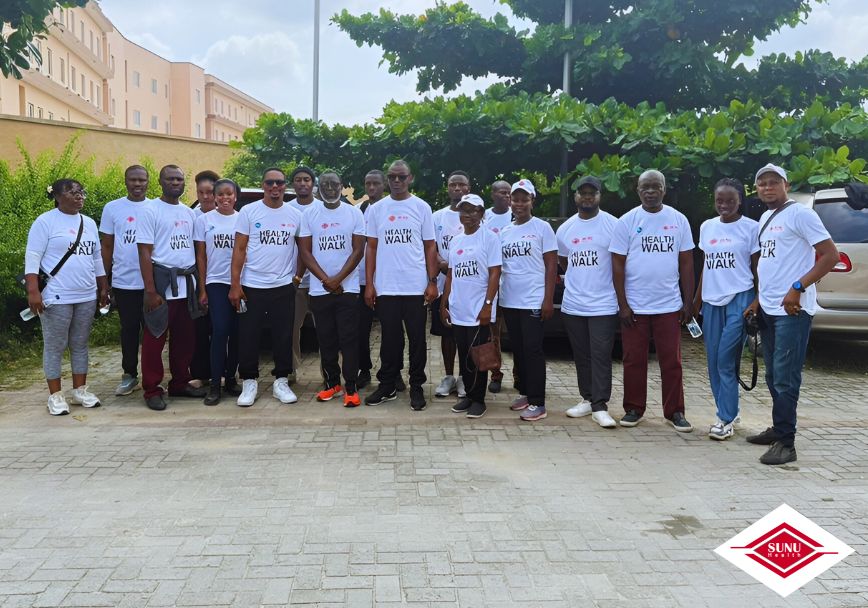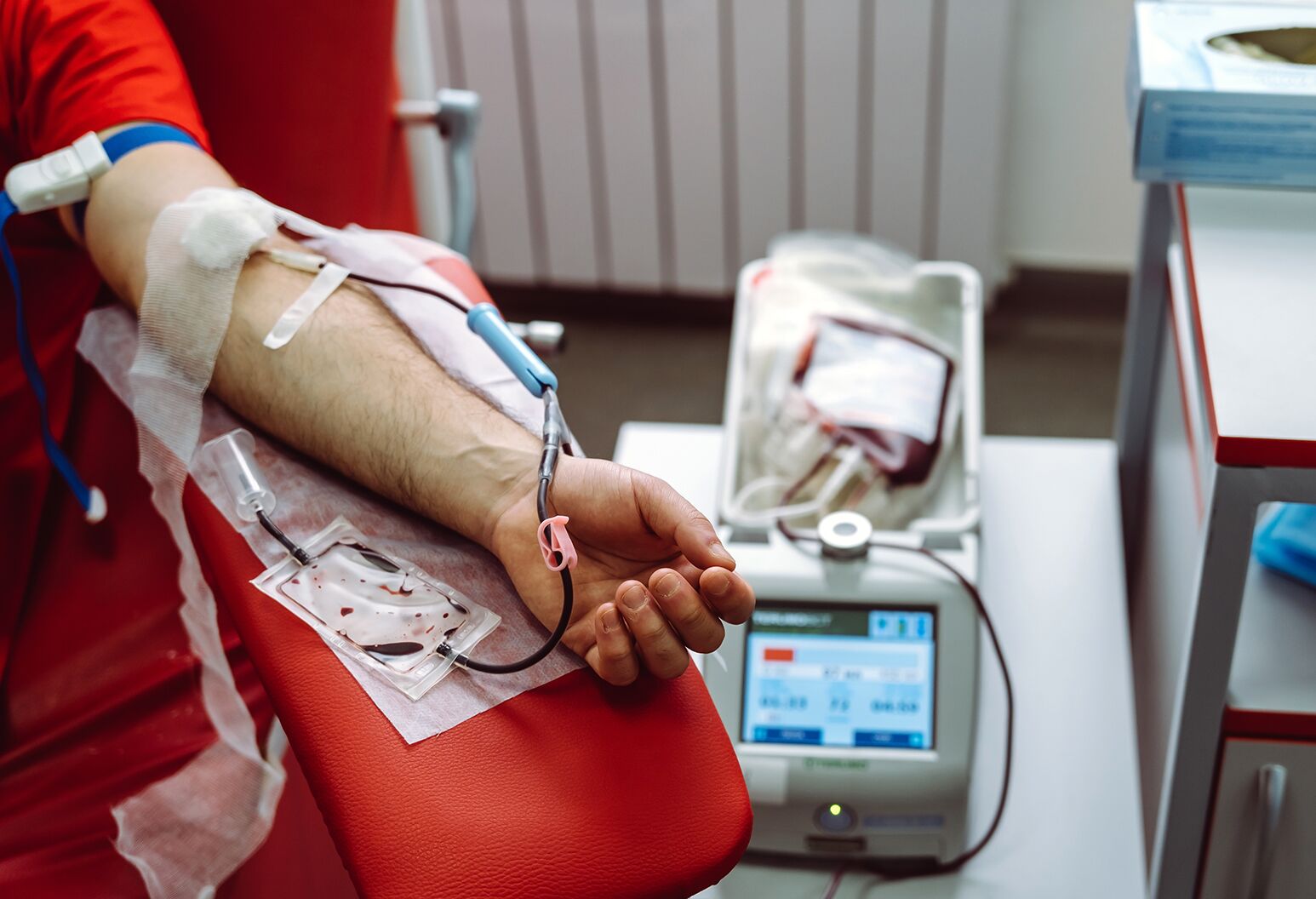Health
Why You Need to Move More in Your Day

Thrombosis, more commonly known as blood clotting, is a dangerous and life-threatening condition. Globally, one in four people die from conditions caused by thrombosis, making it a leading cause of death worldwide.
Concerningly, with technological advances and shifting work patterns, many of us lead increasingly sedentary lifestyles, increasing our risk of thrombosis. Do you sit at a desk for work or enjoy sitting watching TV in the evening? You could be at high risk.
This is because when we sit for long periods of time, it enables pooling of blood in the veins, leading to clot formation, known as deep vein thrombosis (DVT). These clots can then break off and travel to other parts of the body, causing harmful effects. For example, if a clot travels to the lungs it leads to a potentially deadly condition called pulmonary embolism (PE).
In light of this risk, World Thrombosis Day’s (WTD) theme this year is “Move Against Thrombosis”. WTD aims to raise awareness about the risks of thrombosis and encourage and empower people to take preventative action against it.
Signs you’re not moving enough
So how can you know if you are not moving enough and subsequently are at risk of thrombosis?
Globally, one in four adults do not meet recommended levels of physical activity. The goal of 10,000 steps is widely circulated, but even taking 7,000 steps a day can have a statistically significant positive impact on health, says Dr Helen Okoye, a leading thrombosis specialist who is part of the WTD campaign steering committee. If you’re moving less than this, it is important to walk more! Steps can be tracked and monitored on most smartphones and watches.
But crucially, even when living a generally active life, time spent sedentary poses a risk to health. WHO states that we should limit the amount of time spent being sedentary. Replacing sedentary time with physical activity of any intensity (including light intensity) provides health benefits.
To monitor this, sitting down for too long has physical effects on the body that can also be used as tell-tale signals to move more. If you spend long periods of time sitting in front of a screen, you may notice some of the following symptoms:
-
Difficulty sleeping
-
Low energy
-
Poor posture
-
Weight gain
-
Lack of focus
-
Constipation
-
Tight hips and hamstrings
-
Stiff neck and shoulders
-
Back pain
If you’re experiencing any of these symptoms, it is vital to take action to increase your movement. According to Dr Okoye, we all need to make a conscious effort to build movement into our everyday lives. “Make it a daily habit to move more,” says Dr Okoye. “The less you keep your body in a static position throughout the day, the better your chances for living a healthy life.”
Reducing your risk of thrombosis does not require a drastic life overhaul; a few simple changes can increase your chances of a healthy life.
Five ways to move more
Here are five easy ways to break up your time sitting still. Get your friends involved and try to make one or all of these a regular habit in your day-to-day life.
-
Take a break, says Dr Okoye. “Schedule a break in your day. Whether that’s a few minutes outside, a chat with a colleague, or a walk to get a snack or coffee, taking the time to get up and move will reduce your risk of thrombosis. It’s all the little movements we do in the day that matter. The trick is to build movement into every part of your life,” she advises.
-
Walk more. To reach that 7,000 steps goal, there are many ways to implement subtle changes and increase the amount you walk. These include switching to walking meetings and phone calls, taking the stairs, parking a block away from a shop you are going to, and scheduling a 15 – 30 minute walk every day.
-
Stretch more. Why not multi-task to make good use of standing breaks or time watching TV? Exercising or stretching, even for a short time, is a simple healthy habit to introduce. There are brief five-minute yoga or stretching videos on YouTube that can be an effective way to release stress and muscle tension from your body. Or you could set yourself a challenge; for example, to do five lunges every hour.
-
Dance it out. Get some colleagues or friends together to shake it out and have a dance break! Maybe a silly one, but definitely a good way to have a laugh, boost positive energy and reduce the risk of thrombosis.
-
Stand more. Take a five-minute standing break for every hour that you sit down, advises Dr Okoye. “During your work week, try to stay in motion whenever possible. Stand up while you’re talking on the phone or if a colleague stops at your desk for a chat, and go for a walk during lunchtime,” she concludes.
By making these changes a daily habit, not only will you reduce your chances of thrombosis, but it can also have a positive impact on your mental and physical health. Movement releases endorphins, which boost energy levels, and serotonin, which uplifts mood.
Health
Nigeria Launches First National Antimicrobial Resistance Survey

By Adedapo Adesanya
Nigeria has launched its first nationally representative survey on antimicrobial resistance to generate critical data to guide evidence-based policies, improve patient outcomes, and strengthen health system resilience.
Antimicrobial resistance occurs when bacteria, viruses, fungi, and parasites evolve to resist treatment, making infections harder to cure.
As a result, surveillance is essential to track resistance patterns, identify priority pathogens, and guide targeted interventions and with support from the World Health Organization (WHO) and other partners, the initiative marks a milestone in the country’s public health response.
Nigeria becomes the third country globally to partner with WHO on a national antimicrobial resistance survey. having been selected based on the country’s strong commitment to AMR surveillance, its updated WHO Nigeria NAP 2.0, and readiness to expand laboratory and data systems.
Africa’s most populous country ranks 20th globally for age-standardized mortality due to antimicrobial resistance . In 2019, an estimated 263,400 deaths in Nigeria were linked to it—more than the combined deaths from enteric infections, tuberculosis, respiratory infections, maternal and neonatal disorders, neglected tropical diseases, malaria, and cardiovascular diseases.
Globally, resistant infections in tertiary care settings cost between $2,371 and $29,289 per patient episode, extend hospital stays by an average of 7.4 days, and increase mortality risk by 84 per cent.
The survey will see the establishment of a national baseline on antimicrobial resistance prevalence to monitor interventions, assess the distribution, burden (morbidity, mortality, DALYs, cost), and diversity of AMR across regions and populations, as well as contribute to the global target of reducing AMR deaths by 10 per cent by 2030, in line with the political declaration endorsed at the 79th United Nations General Assembly in 2024.
It also seeks to strengthen routine antimicrobial resistance surveillance, including diagnostics, sample referral systems, and laboratory capacity.
Using WHO’s standardized methodology, the survey will run for 12–15 months and cover 40–45 randomly selected health facilities nationwide. Patients with suspected bloodstream infections (BSIs) will be identified using standard case definitions, and blood samples will be analysed in quality-assured laboratories.
Data will be collected across all age groups, covering clinical, demographic, laboratory, financial, and outcome indicators. Follow-up will occur at discharge, 28 days, and three months post-infection. The survey will sample approximately 35,000 patients suspected of BSIs to obtain around 800 isolates of the most common pathogens.
Dr Tochi Okwor, Acting Head, Disease Prevention and Health Promotion, Nigeria Centre for Disease Control and Prevention (NCDC) said, “With WHO’s support, we are confident the survey will generate the evidence needed to protect public health.”
WHO Representative in Nigeria, Dr Pavel Ursu, reaffirmed WHO’s commitment stating that ,“Nigeria is taking a decisive step toward combating AMR with an approach grounded in data, science, and measurable impact. This survey will provide the clarity needed to drive smarter policies, stronger surveillance, and better patient outcomes. Nigeria is laying the foundations for a resilient health system, one that protects lives, strengthens trust, and ensures that essential medicines remain effective for future generations.”
Adding her input, Dr Laetitia Gahimbare, Technical Officer at WHO Regional Office for Africa, added:“Strengthening surveillance enhances Nigeria’s capacity to detect and respond to AMR threats, supporting better patient outcomes, reinforcing health security, and building a resilient system.”
Professor Babatunde Ogunbosi, Paediatric Infectious Diseases Specialist at University College Hospital, Ibadan, highlighted the broader impact:, “This survey is about more than data. It’s about building national capacity for research, diagnostics, and policy. It integrates science into public health decision-making.”
Health
Our Vision Extends Beyond Offering Health Insurance Packages—SUNU Health

By Modupe Gbadeyanka
One of the leading Health Maintenance Organisations (HMOs) in Nigeria, SUNU Health, has said its philosophy is proactive wellness, noting that this was why it recently partnered with The Divine Physician and St. Luke Catholic Chaplaincy Centre for a community health initiative.
The chief executive of the company, Dr Patrick Korie, said, “SUNU Health’s vision extends far beyond merely offering health packages and insurance.”
“We are fundamentally interested in proactive wellness—preventing illness rather than just treating it. This annual exercise is a crucial part of that commitment, and we will continue to champion it for as long as we exist,” he stressed.
The medical practitioner led the company’s annual Health Walk in Lagos on Saturday, November 8, 2025. The event drew hundreds of health enthusiasts, including the Chaplain of the centre, Rev Fr. John Okoria SJ.
His active participation reinforced the spiritual and moral commitment to holistic well-being, proving crucial in mobilizing staff and community members, thereby ensuring the vital wellness message reached a broad and deeply engaged audience.
The health walk covered several major streets in Lagos, starting from Ishaga Road and navigating through Itire Road, Randle Avenue, Akerele, Ogunlana Drive, and Workers Street before concluding back at the starting point. Following the vigorous walk, participants engaged in a session of high-energy aerobics and other outdoor exercises, reinforcing the day’s focus on fitness.
“We are delighted to champion this vital health initiative alongside the Catholic Chaplaincy Centre LUTH/CMUL. The turnout was truly delightful, reflecting the community’s deep desire to embrace wellness.
“Collaborations like this amplify our message and commitment to the Nigerian community,” the Brand and Corporate Communications Lead at SUNU Health, Mr Samuel Olayemi, stated.
Health
80 Coronation Registrars Staff Donate Blood in Lagos CSR Initiative

By Adedapo Adesanya
Coronation Registrars Limited, a subsidiary of Coronation Group, in partnership with the Lagos State Blood Transfusion Committee (LSBTC), recently hosted a Blood Drive Initiative at the 5th floor of Coronation Group Plaza. The event saw over 80 staff donate blood to support critical healthcare needs in Lagos State.
The Blood Drive Initiative forms part of Coronation’s commitment to meaningful, human-centred corporate social responsibility, a direct, measurable, and life-saving effort that reflects the Group’s health and sustainability values.
As Prosperity Partners dedicated to creating sustainable wealth for clients and the African continent, Coronation recognises that true prosperity extends beyond financial returns to encompass the well-being of communities we serve.
The company noted that this initiative enabled it to deliver immediate social impact by supporting national blood supply shortfalls through employee-driven action, demonstrate leadership in health-focused CSR aligned with ESG goals and SDG 3 (Good Health & Well-being), strengthen internal culture by fostering employee engagement, empathy, and purpose in a safe, structured environment, and reinforce corporate reputation through public-facing acts of service, stakeholder trust, and media visibility.
Blood donation remains a critical need in Nigeria, where regular blood supply is essential for emergency care, surgeries, and treatment of various medical conditions. Each donation can save up to three lives, and the collective effort of Coronation employees will significantly impact patients in need across Lagos State healthcare facilities.
“This aligns seamlessly with Coronation’s broader sustainability agenda, which views healthcare access as fundamental to building prosperous communities across Africa,” the company said in a statement on Tuesday.
Partnering with a certified medical institution, the drive was professionally managed, medically compliant, and logistically efficient. Participants underwent necessary medical screening procedures to ensure donor fitness and safety. Following their donations, donors received refreshments and appreciation for their life-saving contribution.
“At Coronation, we believe in making a meaningful difference in the communities we serve,” said Mr Oluseyi Owoturo, Chief Executive Officer of Coronation Registrars Limited. “This Blood donation Initiative reflects our values in action, saving lives, building community, and positioning the company as a purpose-driven brand. We’re proud of our employees who stepped forward to donate blood and save lives. This is what sustainable impact looks like: tangible solutions that address real challenges facing our continent.”
The partnership with the Lagos State Blood Transfusion Committee ensured professional handling of the donation process, meeting all safety and quality standards for blood collection and storage.
Coronation Registrars Limited says it continues to demonstrate that corporate success goes hand-in-hand with social responsibility.
“This initiative reinforces the company’s purpose to create a prosperous future for clients and the African continent through transformational solutions,” it added.
-

 Feature/OPED6 years ago
Feature/OPED6 years agoDavos was Different this year
-
Travel/Tourism9 years ago
Lagos Seals Western Lodge Hotel In Ikorodu
-

 Showbiz3 years ago
Showbiz3 years agoEstranged Lover Releases Videos of Empress Njamah Bathing
-

 Banking7 years ago
Banking7 years agoSort Codes of GTBank Branches in Nigeria
-

 Economy3 years ago
Economy3 years agoSubsidy Removal: CNG at N130 Per Litre Cheaper Than Petrol—IPMAN
-

 Banking3 years ago
Banking3 years agoFirst Bank Announces Planned Downtime
-

 Banking3 years ago
Banking3 years agoSort Codes of UBA Branches in Nigeria
-

 Sports3 years ago
Sports3 years agoHighest Paid Nigerian Footballer – How Much Do Nigerian Footballers Earn












